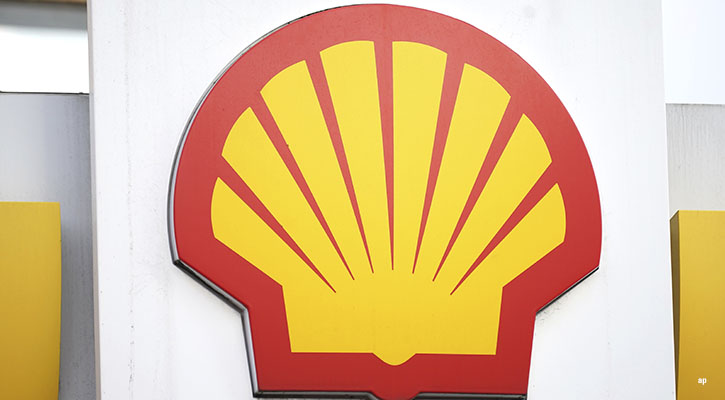For our latest analyst note, in reaction to the 2009 results, click here.
Fair value estimate 5,617p ¦ Uncertainty rating: Medium ¦ Economic moat: Narrow
Thesis
(Last updated 03/03/10)
Rio Tinto is a top-tier global miner along with BHP Billiton, Brazil's Vale, and UK-based Anglo American. The rejection of a megamerger proposal from larger rival BHP was a mistake. However, a world-class asset base and capable management make Rio one of the few miners to earn more than its cost of capital through the commodity cycle. Geographic and product diversification give Rio relatively stable cash flows and lower operating risk than many of its mining peers. Most revenue comes from the relative safe havens of Australia, North America, and Europe, though operations span six continents.
Through selective acquisitions and grass-roots exploration, Rio has assembled a large portfolio of long-lived, low-cost assets. Operations include world-class hubs in aluminium, coal, copper, diamonds, gold, iron ore, industrial minerals, and uranium. This competitive resource base sets Rio apart from most of the rest of the pack and supports returns above average for both the resource industry generally and its more select diversified mining peers.
Rio's operating practices are geared toward creating long-term economic value; the company is constantly seeking efficiency improvements. Planning horizons and existing operations ensure average production levels should be sustained for at least 20 years. The company has a portfolio of quality projects under development or appraisal and a focused exploration programme to seek out and secure new opportunities for profitable expansion. However, a recent focus on Alcan-related debt reduction will put much new investment on the back burner. The strategic partnership with Ivanhoe Mines to develop its Oyu Tolgoi copper and gold deposit enhances Rio's portfolio. Oyu Tolgoi is the largest undeveloped copper deposit in the world.
The board has come under criticism for leveraging up the balance sheet to acquire Alcan immediately ahead of the credit crisis. Planned asset sales were late to be realised, necessitating drastic expenditure cutbacks. A $15 billion entitlement issue and the Western Australia iron ore joint venture with BHP significantly reduce balance sheet pressure.
Rio has limited pricing power over most of its products. The notable exception is in iron ore, where, along with BHP and Vale, Rio is a member of the global seaborne export oligopoly with 25% market share. Minimal pricing power is aggravated by the volatile and cyclical nature of commodity prices. However, we do ascribe a narrow economic moat to Rio, given the firm's large, low-cost, and nonreplicable operations. The lack of comparable megadeposits and increasingly prohibitive capital costs are barriers to entry.
Valuation
We're increasing our fair value estimate to 5,617p per share from 4,350p (based on an exchange rate of $1.50 per British pound as of March 2) after adjusting our near-term copper and iron ore price assumptions. Underpinning the valuation in the longer term is ongoing growth in Chinese metal consumption followed by demand from India, mining industry input cost inflation, industry consolidation, infrastructure bottlenecks, a scarcity of quality resources because of years of exploration neglect, and sovereign risk. Much of the new demand has been satisfied by substantially higher-cost mines. The structural decline in the US dollar, the currency in which commodities are denominated, continues. Our long-term Australian dollar/US dollar exchange rate forecast is 0.80.
Risk
Significant environmental and operating risks are associated with mining. Some of the company's assets have country-specific risks. Overall, Rio offers broad diversification, low costs, and strong financial position. Because of the volatility in the underlying commodity prices, we think our fair value estimate carries a medium fair value uncertainty rating.
Management & Stewardship
Tom Albanese became CEO in May 2007, taking over from Leigh Clifford. Albanese, 51, is the first US citizen to lead the company. He was appointed to the board in 2006 as director of group resources, which is responsible for exploration, operational and technical excellence, human resources, communications and external relations, and global business services. Jan du Plessis fills the chairman role, having replaced Paul Skinner in April 2009. He is chairman of British American Tobacco, a nonexecutive director of Marks & Spencer, and was previously nonexecutive director and then chairman of the audit committee of Lloyds TSB.
Overview
Growth: Rio has increased production of most commodities significantly since 2001 and has numerous development projects lined up. Near-term growth could suffer because priority is being given to reducing Alcan-related debt.
Profitability: Diversification and low costs limit volatility, but nonetheless, margins rise and fall with commodity markets. The operating margin of 24% in 2009 was below 30% in 2007 and 2008 and 2006's 40% because of cost pressures and price declines.
Financial Health: The Alcan acquisition in 2007 saw interest coverage plummet to 5 and leverage rise to 172%. A $15 billion entitlement issue, $5.8 billion iron ore joint-venture payment from BHP, and anticipated asset sales and strong cash flows have returned debt to very comfortable 40% levels.
Profile: Rio Tinto searches for and extracts a variety of minerals around the world, with the heaviest concentrations in North America and Australia. Major products include aluminium, copper, diamonds, energy products, gold, industrial minerals, and iron ore. The 1995 merger of RTZ and CRA, via a dual-listed structure, created the present-day company. The two operate as a single business entity. Shareholders in each company have equivalent economic and voting rights in Rio as a whole.
Strategy: Rio takes a common-sense, long-term approach to mining. Its strategy is to focus on large-scale, long-life, and low-cost mining operations and to invest in maintaining competitive positions. The company constantly seeks new sources of advantage to institutionalise in ways that competitors cannot easily replicate. It pays prime attention to project quality and not the commodity or geographical location.























